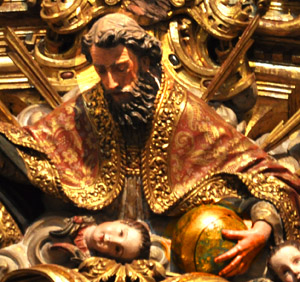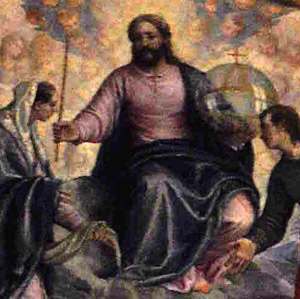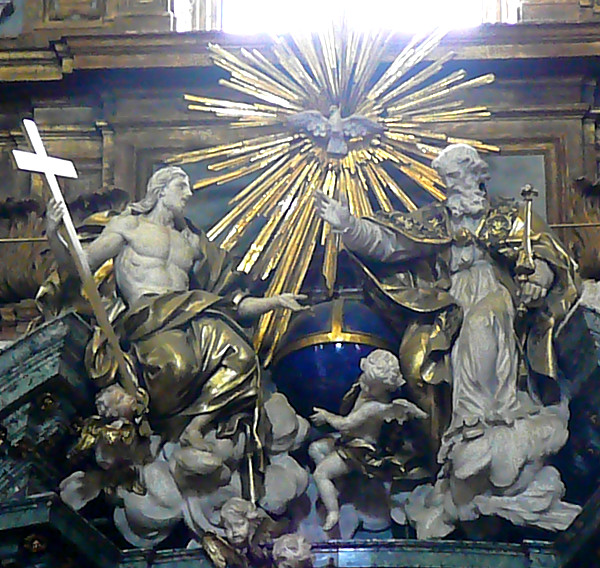The orb is common in portrait images of the Father (first picture at right), of Christ as ruler (second picture at right), or of the Trinity (example). The Christ Child will also often be pictured with the orb, especially in images of the Madonna and Child or St. Christopher (example).
The orb was also adopted by secular rulers to assert the extensiveness and Christian identity of their realms. Thus a saint who was a king may be pictured holding an orb (example), but with that exception orbs are not for mere saints.
In Garofalo's The Old and New Testaments an impressively sized orb (without the horizontal and vertical lines) is held by Ecclesia, the Church personified.
Prepared in 2021 by Richard Stracke, Emeritus Professor of English, Augusta University.

Villanueva y Barbales, God the Father at the summit of the Immaculate Conception Altar, Oviedo, Spain. (See the description page.)

Christ with a mappa mundi orb, detail from Paolo Veronese's Martyrdom of St. Justina. (See the description page.)

Detail from A. Pozzo's Trinity Altarpiece: Father and Son flank a large orb while the Holy Spirit hovers above it. (See the description page.)